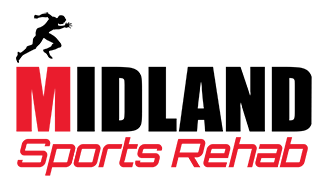For athletes, discomfort is a regular part of life. Not only does excelling in your chosen sport involve pushing yourself physically, but you can come out of even the most uneventful game or practice with soreness or mild abrasions.
And though it’s true that this is an unavoidable part of being active, there’s a difference between typical soreness and an issue that needs to be addressed by a professional. If you think you might need to make a physical therapy appointment but are unsure, we’re here to help.
Listed below are 7 signs you need to see a physical therapist. If any of them apply to you, consider making the call today.
1. DULL OR LINGERING PAIN
More often than not, a slight dull pain after an intense workout isn’t a cause for concern. However, if you’re still experiencing pain after a few days of taking time off from your activity, it might be time to see a physical therapist.
Don’t ignore persistent pain, it’s your body’s way of telling you that there’s something wrong. Whether you’re dealing with a pulled muscle or joint pain, a physical therapist can diagnose the source of your discomfort and help you with the healing process.
2. DIMINISHED PERFORMANCE
A noticeable decrease in your sports performance is a sure sign that you need to set an appointment with a physical therapist, especially if you’re not sure where the decline came from.
During your first physical therapy appointment, a physical therapist can assess your form and technique to discover any bad habits that could be contributing to your symptoms. They’ll then help you to correct any issues, returning your muscle strength and function back to full capability in the process.
3. SHARP PAIN
While a dull pain is typically a non-issue that can be treated through rest and icing the affected area, a sharp pain is often indicative of a more serious problem. Unlike the mild throbbing pain that comes along with minor injuries, sharp pain in a centralized area is a sign of a muscle strain, stress fracture, or torn ligament.
Because these are more serious injuries, the pain that comes along with them is unlikely to subside on its own or with at-home treatments such as ice and heat packs. If you feel a sudden, sharp pain during or after physical activity, it’s a good idea to see a physical therapist as soon as possible.
4. MEDICATION IS INEFFECTIVE
When you’re experiencing mild pain, using an over-the-counter NSAID like ibuprofen isn’t a bad place to start. This type of anti-inflammatory medication can speed up the healing process by reducing inflammation around the injury. But sometimes, ibuprofen isn’t enough.
If you’ve been taking medication such as Advil or Aleve and are still in pain, you likely need a professional’s help. Trying to continue with your normal exercise routine while taking pain relievers is a great way to injure yourself further.
Physical therapy is also a fantastic option for those wishing to avoid the risks associated with pain medications altogether. Though the occasional aspirin isn’t going to hurt you, a few sessions with a physical therapist can eliminate the need for medication through treatments such as strengthening exercises and manual therapy.
5. YOU HAVE A REPETITIVE USE CONDITION
Though athletes are susceptible to a wide variety of injuries, those caused by repetitive use are some of the most common injuries seen by physical therapists. As the name suggests, these injuries are a result of overuse of a certain group of muscles, nerves, and tendons.
Tennis elbow, for example, is a repetitive use injury that occurs from overloading the tendons in your elbow by swinging a tennis racket over and over.
We’ve already briefly discussed what to expect at a physical therapy appointment, but in addition to correcting any missteps in your technique, a physical therapist can design a set of exercises that will help you to strengthen the strained muscles and minimize the possibility of a re-injury.
6. VISIBLE CHANGES IN APPEARANCE
No one is more familiar with how you look and feel than you. So when something goes wrong, you’re the first to know. If you notice a swollen knee, elbow, or other part of your body, take it seriously, even if you’re the only one to see it.
This is especially important if the swelling occurs after a practice or training session, as this is almost certainly a sign of injury. To avoid exacerbating a possible injury, call a physical therapist instead of exercising on a swollen joint. The average length of a physical therapy appointment is just 30-60 minutes, so you don’t have to worry about spending an entire day on recovery exercises.
7. YOU EXPERIENCED A TRAUMATIC EVENT
Last but not least, the most obvious sign that you need to make an appointment with a physical therapist is experiencing a traumatic event. A diagnosed injury such as a broken bone or a muscle tear calls for giving yourself a recovery period.
And while it’s possible to heal on your own, a physical therapist will ensure that your body is healing in the correct way. Your healing time will be significantly reduced, as well as your risk of experiencing long-term effects of the injury.
MAKE A PHYSICAL THERAPY APPOINTMENT BEFORE YOU GET BACK IN THE GAME
Making a physical therapy appointment sooner rather than later can make all the difference in terms of your recovery period and your performance level in the long-term. Attempting to work through pain or injury can cause a myriad of unwanted effects, including permanent damage to your body.
Whether you’re experiencing a dull pain that simply won’t go away or have suffered a more serious injury such as an ACL tear, you can benefit from physical therapy treatment.
Don’t put your sports performance and overall health at risk. Contact us today, the team at Midland Sports Rehab is ready to help you get back to your best self.


